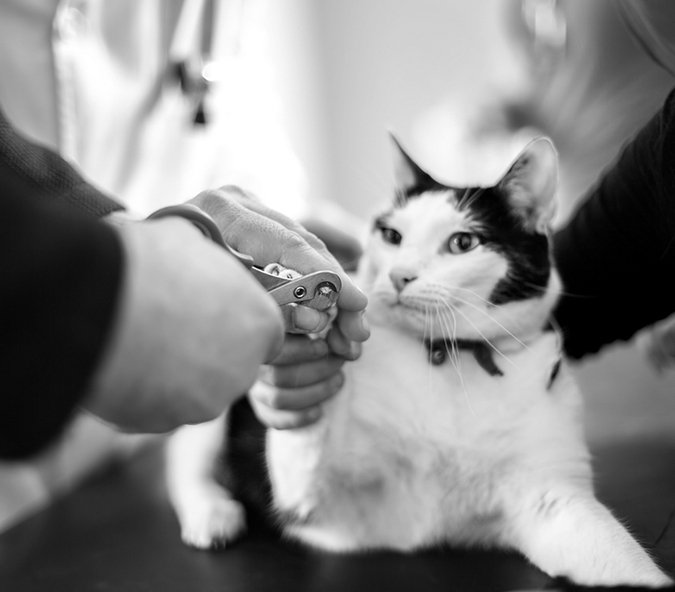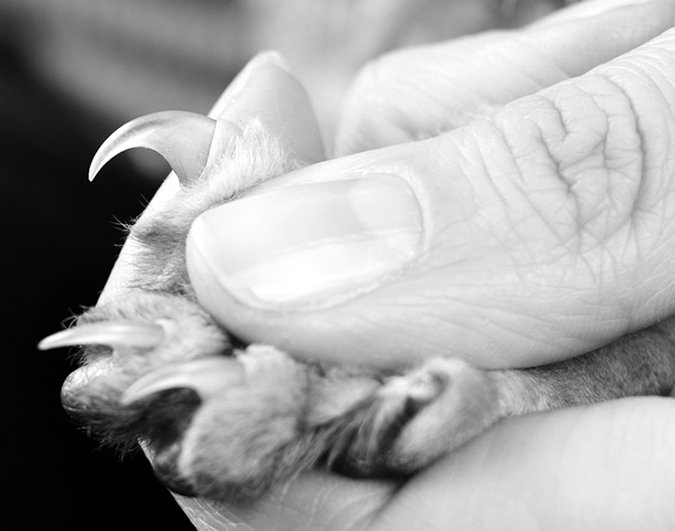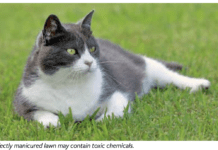Cats depend on their claws to grip while climbing. They serve as weapons in a fight, hold their prey and release scent to declare ownership of your sofa. While many cats are fastidious about grooming, indoor kitties depend on their owners to keep their claws in top shape. They don’t do enough digging and scratching on abrasive objects to keep the claws short.
What may surprise you is that your cat’s claws can reveal his health status. “Name a disease and it probably can affect the claws,” says dermatologist William H. Miller, VMD, Medical Director of the Companion Animal Hospital at Cornell University College of Veterinary Medicine. “Diseases that affect all the claws usually start with just one claw that gets broken or avulsed [detached].”
luckybusiness | Bigstock


Untreated Infections
Left untreated, an infection may appear in and around the area of one damaged claw. Systemic conditions, including nutritional deficiencies or autoimmune disease, may show symptoms on your cat’s claws. “The claw itself won’t be infected, but the claw bed and digits can be,” Dr. Miller says. “Claw trauma and infections are uncomfortable and painful, so the cat may walk funny while trying to protect his toe. Or he may lick the claw and, if an infection is present, it usually has a nasty smell.”
To reduce injury to your cat, regularly trim his claws either at home or take him to a groomer. In general, the tips of the claws need to be clipped every few weeks. Failure to regularly inspect and trim the claws can lead to serious consequences:
– Overgrown claws can become snagged on carpet fibers and be ripped out as the cat tries to free the paw. The loss of the claw is painful and can trigger some blood loss. This requires applying pressure and styptic powder to allow a clot to form. If it doesn’t, a veterinarian may need to apply a stronger remedy.
– In an effort to free the snagged foot, a cat with an underlying weakness in his bones may unintentionally break the bone attached to the claw. This is a very painful condition and needs to be addressed by a veterinarian.
– Non-weight bearing claws, like the dewclaws on the inside of each front paw, can grow in a circle and into the foot pad.
When trimming claws at home, a clean, sharp toenail clipper used for people can work on cats due to their small claw size, Dr. Miller says. “If the clippers are dull, the claw is under traction while it is being cut and that is uncomfortable. If the cat is constantly pulling his foot away, it is possible that the claw will be cut too short.”
Aleksei Smolensky | Bigstock


Hayley Keyes, past president of the International Professional Groomers, Inc. who operates the Nanhall Pet Spa/School of Grooming in Greensboro, N.C., offers step-by-step instructions to successfully and safely trim your cat’s claws:
1. Make trim time positive
Before your first session, play with your cat’s feet regularly to get him used to you touching his toes. Gently squeeze his footpads to expose the claws and release. Pet him and give him a small healthy treat.
2. Set out tools in advance
Nail clippers, a thick towel and styptic powder in case you clip a claw too short and it bleeds.
3. Throw on the towel
Wrap your cat in a large bath towel, exposing one claw at a time to better handle him safely. Do the trimming in an enclosed room like a bathroom to prevent his escape.
4. Get into position
Place your thumb on top of one paw and your fingers of that hand underneath. Then gently press to expose the claw.
5. Snip the tip of the claw
The clear, white part. Don’t cut too closely to the pink area of the claw called the quick — the vein that runs through the claw — or it will bleed.
6. Praise lavishly during trimming
You want your cat to have a positive experience.



